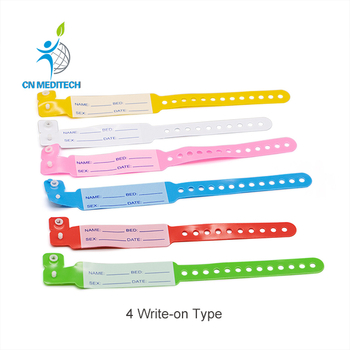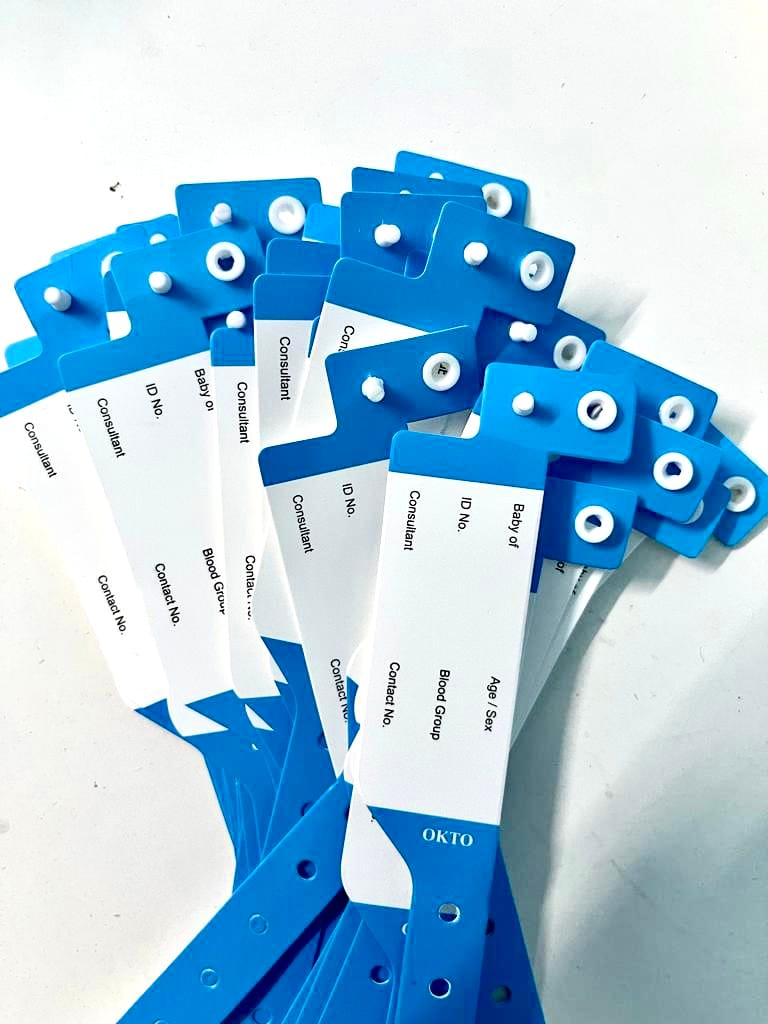Simplifying Client Treatment With Effective Identification Bands
The implementation of reliable identification bands is a pivotal element in improving patient care within healthcare setups. As the landscape of client recognition evolves, one need to think about the ramifications of these systems on general health care distribution and client outcomes.
Relevance of Person Recognition
Ensuring precise client identification is vital in healthcare settings, as it straight affects the safety and top quality of treatment provided. Misidentification can bring about significant mistakes, including administering the wrong medicine, executing inaccurate procedures, or miscommunicating crucial client information. Such mistakes not only threaten client safety and security yet can also result in legal implications and reduced rely on health care systems.
Effective client identification is essential to developing a safe and secure setting where individuals receive individualized and suitable care. It facilitates the exact documentation of case histories, allergies, and treatment strategies, guaranteeing that doctor have access to necessary information in any way times. Durable identification procedures assist enhance interaction among medical personnel, enhancing collaboration and decreasing the threat of blunders.

Kinds of Identification Bands
Recognition bands play an important role in preserving precise individual documents and improving safety and security within healthcare environments. Various types of recognition bands are used to provide to the specific requirements and needs of different patient populations.

One more type is the ankle band, which is especially beneficial for newborns and infants, guaranteeing that identification remains undamaged also throughout treatment procedures. Specialty bands, such as those for allergic reaction alerts or drop threat signs, supply added layers of safety and security by attracting prompt focus to vital client problems.
Recently, digital recognition bands have actually gained appeal, incorporating barcodes or RFID modern technology that can be checked to rapidly recover individual data. These bands simplify workflows and minimize the danger of human error during person recognition processes.
Benefits of Effective Recognition
Reliable recognition of people via using identification bands contributes dramatically to overall person security and care top quality. By making sure that each client is precisely recognized, doctor can successfully match medical therapies and procedures to the proper individual, decreasing the risk of errors. This is specifically important in atmospheres with high person turnover, where the potential for misidentification is higher.
Additionally, effective identification bands enhance interaction among medical care teams. Accurate and clear individual identification promotes cooperation and ensures that all staff member understand a person's details requirements and case history. This communication is vital for supplying worked with treatment, particularly in emergency circumstances where time is vital.

Ultimately, effective recognition with making use of identification bands not only safeguards patients but discover this additionally advertises a society of safety within healthcare centers (Patient Identification Band). By prioritizing exact identification, medical care companies can improve results and boost the overall individual experience
Carrying Out Recognition Equipments
While the significance of person identification is well identified, the application of robust recognition systems positions a complex difficulty for healthcare organizations. Establishing efficient recognition systems requires a comprehensive strategy, including technology, workers training, and procedure combination.
First, organizations need to select suitable recognition technologies, such as barcode scanning, RFID, or biometric systems. Patient Identification Band. These innovations ought to be reviewed based upon cost, use, and compatibility with existing facilities. A pilot program can help identify possible concerns before major execution
Following, extensive training for staff is crucial. All employees need to comprehend the significance of exact patient identification and excel in making use of the chosen innovations. Normal training updates and assessments can strengthen ideal methods and guarantee ongoing conformity.
Furthermore, health care companies should establish standardized treatments for patient recognition throughout all divisions, minimizing inconsistencies and enhancing communication. Routine audits can help identify gaps in adherence to these protocols.

Inevitably, an efficient application of identification systems not only improves patient security however likewise promotes a culture of accountability and persistance within medical care setups, making certain constant and reputable individual treatment.
Future Trends in Client Identification
Developments in modern technology are set to change person recognition practices in healthcare settings. The integration of biometric recognition methods, such as fingerprinting and facial acknowledgment, is expected to enhance precision and safety. These innovations can dramatically decrease the risk of misidentification, making certain that clients receive the right treatments and medications.
Additionally, the implementation of blockchain innovation for client records is gaining traction. This decentralized technique can give a tamper-proof and protected approach for handling person identities, therefore simplifying access to vital details throughout different doctor.
Another pattern is the boosting usage of mobile wellness applications that leverage QR codes for person recognition. These applications enable real-time updates and very easy access to from this source individual information, encouraging health care professionals to make educated decisions quickly.
Furthermore, fabricated knowledge (AI) is positioned to play an essential function in analyzing patient recognition data, identifying patterns, and forecasting prospective identification mistakes prior to they happen.
As these technologies progress, they assure not just to boost patient safety however also to enhance the overall effectiveness of healthcare distribution systems. Accepting these innovations will be essential for future-proofing patient care techniques.
Conclusion
Finally, effective recognition bands are crucial for improving patient safety and care quality within medical care setups. By decreasing the threats linked with misidentification, these bands promote precise and timely info retrieval, inevitably boosting interaction among healthcare providers. The execution of redirected here durable recognition systems not just promotes a culture of security however also settings health care institutions to adjust to future fads in individual identification innovation, making sure ideal end results for people in diverse professional environments.
As the landscape of patient recognition evolves, one need to consider the effects of these systems on general healthcare distribution and client outcomes.Reliable client recognition is essential to developing a safe environment where individuals receive customized and ideal care. Inevitably, focusing on effective patient identification methods not only cultivates a society of safety and security yet also adds to improved individual outcomes and general satisfaction with health care solutions.
Efficient recognition of patients with the usage of identification bands contributes dramatically to general individual safety and care high quality. The execution of durable recognition systems not just fosters a culture of security yet also settings medical care institutions to adapt to future fads in person recognition modern technology, making sure optimal results for individuals in varied professional settings.